Life on the ice: drift station "North Pole — 1"

May 25 is 81 years old since the delivery of the first batch of equipment for the world's first drifting research polar station, the North Pole — 1. In 1937, four dedicated scientists - Ivan Papanin (expedition leader), Yevgeny Fedorov, Ernst Krenkel and Peter Shirshov - landed on an ice floe 8 km from the North Pole and founded the station, where they lived for 274 days, drifted gradually to the coast of Greenland. This incredibly brave expedition - at all stages: delivery, accommodation and evacuation - allowed us to collect unique hydrographic, meteorological and glaciological data. And the real feat was accomplished not only by the “Papanitsa”, but also by the crews of the pilots who delivered the expedition to the North Pole.
Today it is relatively easy to get to the North Pole: nuclear icebreakers (the only ones in the world) and cargo aircraft are at your service. In 1937, nothing like this was in sight. There were no sufficiently reliable and powerful vehicles that allow “in one go” to deliver the expedition to the top of the planet. The equipment for such expeditions was not created and tested. The fact that today seems to us quite ordinary things, 80 years ago was a series of serious problems, the solution of which required tremendous courage, skill and resourcefulness.
The plan of the expedition was presented to Stalin in early 1936. The leader of all, as they say today, the project was the legendary Otto Yulievich Schmidt .

Expedition was prepared during the year. Accommodation for four polar explorers was supposed to be
custom-made quadruple tarpaulin tent with aluminum collapsible frame. The tent trim was multi-layered, with two layers of eiderdown. The floor of the tent was essentially a rubber air mattress 15 cm thick. The dimensions of the tent were 3.7 x 2.5 m, height 2 m.
Reliable radio communication was crucial for polar explorers. Therefore, for the expedition all on the same special order were made two radio stations - the main and backup. They had to be powered by alkaline batteries, which could be charged through a dynamo machine in three ways: from a windmill, a small gasoline engine, or a manual drive. All radio equipment almost 500 kg.
It was planned that the polar explorers would drift on the ice during the year. Therefore, they produced 3.5 tons of products sealed in cans, each of which contained a ration for 10 days. The total food supply was designed for 1.5 years of life for four people.
On March 22, the expedition on 5 Aviaarctic aircraft flew out of Moscow and headed for Arkhangelsk. The entire cargo and the polar explorers themselves carried four ANT-6-4M-34Rs:
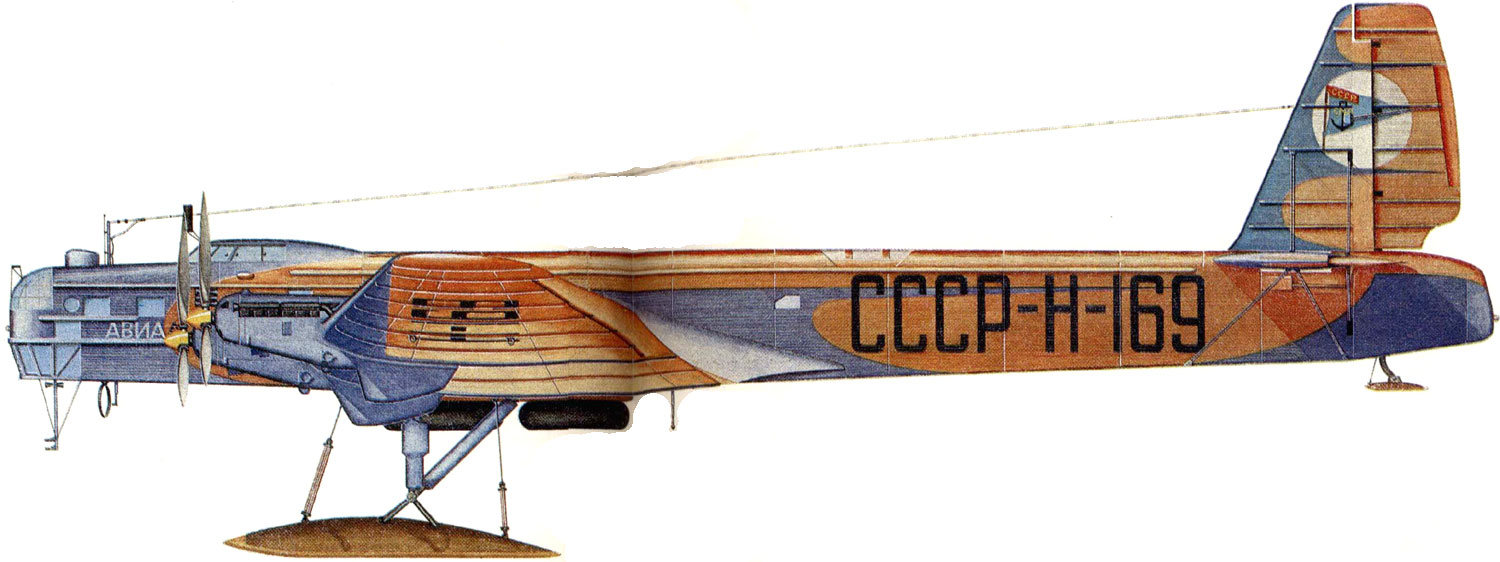
... and the fifth was the reconnaissance aircraft P-6:
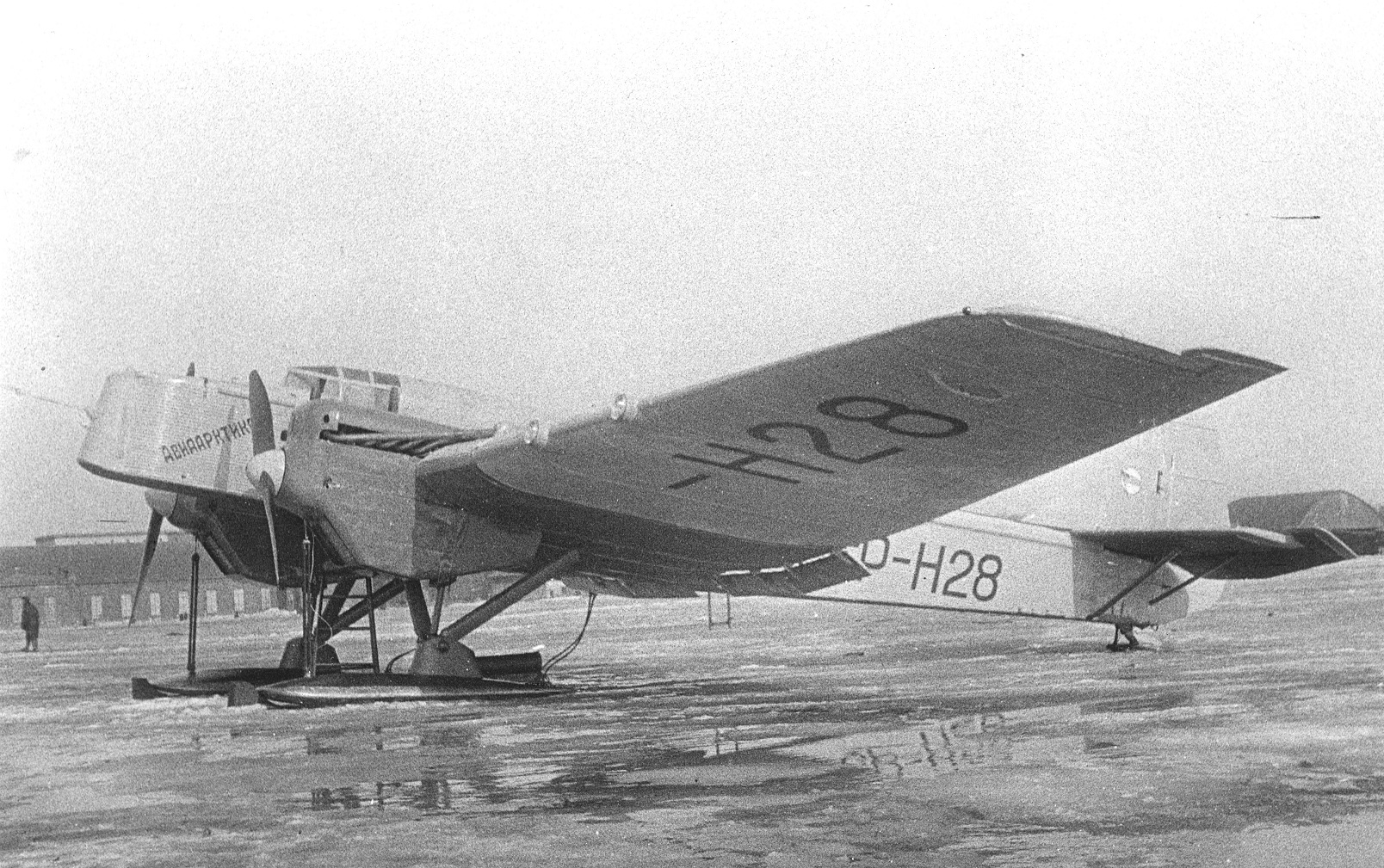
The importance of the expedition, including for the international prestige of the USSR, is indicated by the fact that the commander of the air group was Mikhail Vodopyanov , who in 1934 was awarded the title Hero of the Soviet Union for rescuing 20 people from the crew of the distressed Chelyuskin ship. For the delivery of “Papanins” to the North Pole, Vodop'yanov will be awarded the Order of Lenin.

Mikhail Vodopyanov (right).
The main navigator of the air group was Ivan Spirin . In 1934, he was a navigator in a three-day flight on a single-engine ANT-25 aircraft, during which the world distance record was set - 12,411 km. For the masterful withdrawal of the air group to the destination Spirin will be awarded the title Hero of the Soviet Union.
The pilot of the second aircraft was Vasily Molokov , who also participated in the rescue of the “Chelyuskinites”. One of the most experienced polar pilots of the time. He became the third person in history to receive the title of Hero of the Soviet Union (Vodopyanov was the sixth).
The third plane was flown by Anatoly Alekseev , in 1928, he participated in the operation to rescue the polar expedition of Umberto Nobile , which crashed on the airship "Italia".
The fourth aircraft was piloted by Ilya Mazuruk , also a very experienced pilot, who flew from Moscow to Sakhalin in 45 hours in 45 hours. For participation in the “Papanin” expedition, Mazuruk will receive the title of Hero of the Soviet Union.
The reconnaissance aircraft was driven by Pavel Golovin , who in May 1937 became the first airplane pilot in the world to fly over the North Pole.
Pilots of the squadron trained on landings on the ice of Leonard Kruse , who in 1936 made a record flight of about 10,000 km Leningrad-Irkutsk-Nordvik, which was a record for its time. On the plane of the P-5 Cruise helped to explore the state of the ice in the area of the North Pole for landing the air group "Papaninsky" expedition.

The first on the left is Ivan Spirin, in the center is Otto Schmidt, the third on the right is the radio operator of the expedition Ernst Krenkel.
The flight was difficult, long and took place in several stages: Moscow — Arkhangelsk — Naryan-Mar — Rudolph Island. Only on May 21, the first car of the air group made the final “spurt” to the North Pole. I almost had a tragedy: there was an antifreeze leak in one of the engines. The TB-3's thick wings allowed the inside of them to move, the mechanics opened the wing casing from inside, and alternately wrapped the place of leakage with a rag during the entire flight, and when the rag got wet, the antifreeze was squeezed into a bucket and manually pumped back into the engine. “Wrapped with a rag” means that a person thrust out his arms through a hole in the wing casing at a 20-degree frost and flight speed of about 150-180 km / h to wind the rag over the pipeline. And so for several hours, until finally they landed on the North Pole. Vodopyanov became the first pilot in the world to land at the North Pole. The expedition members and the crew began assembling a dwelling tent.
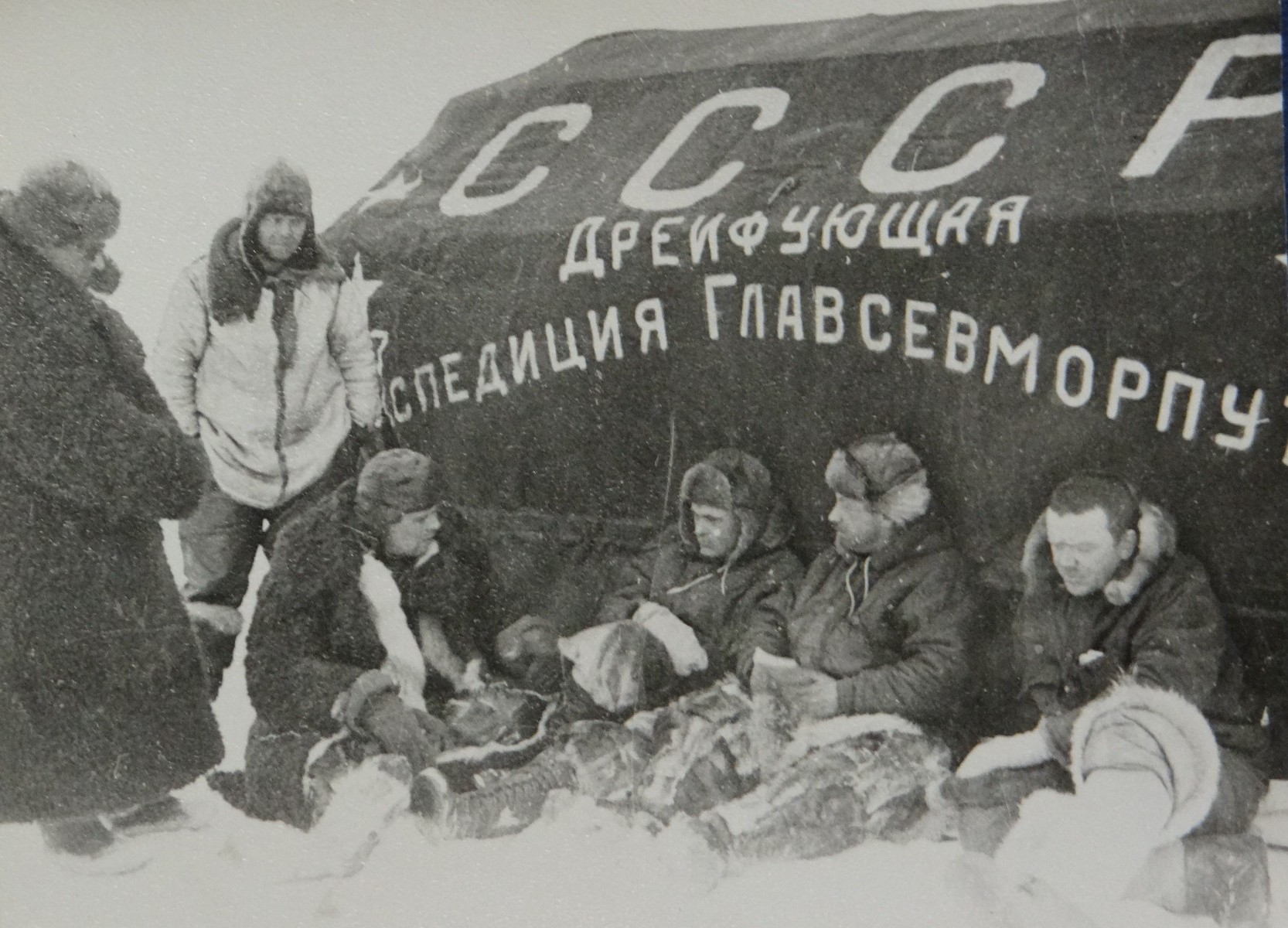
The rest of the planes arrived alone and on different days: it was very difficult for navigators and pilots to find the landing site of the first plane, and in difficult conditions - strong wind, snow charges, the absence of any visual reference points for reference to the terrain. Finally, on June 5, the entire expedition was assembled, and on June 6, the planes flew home - this day is considered the official start of the work of the drifting station "North Pole — 1".

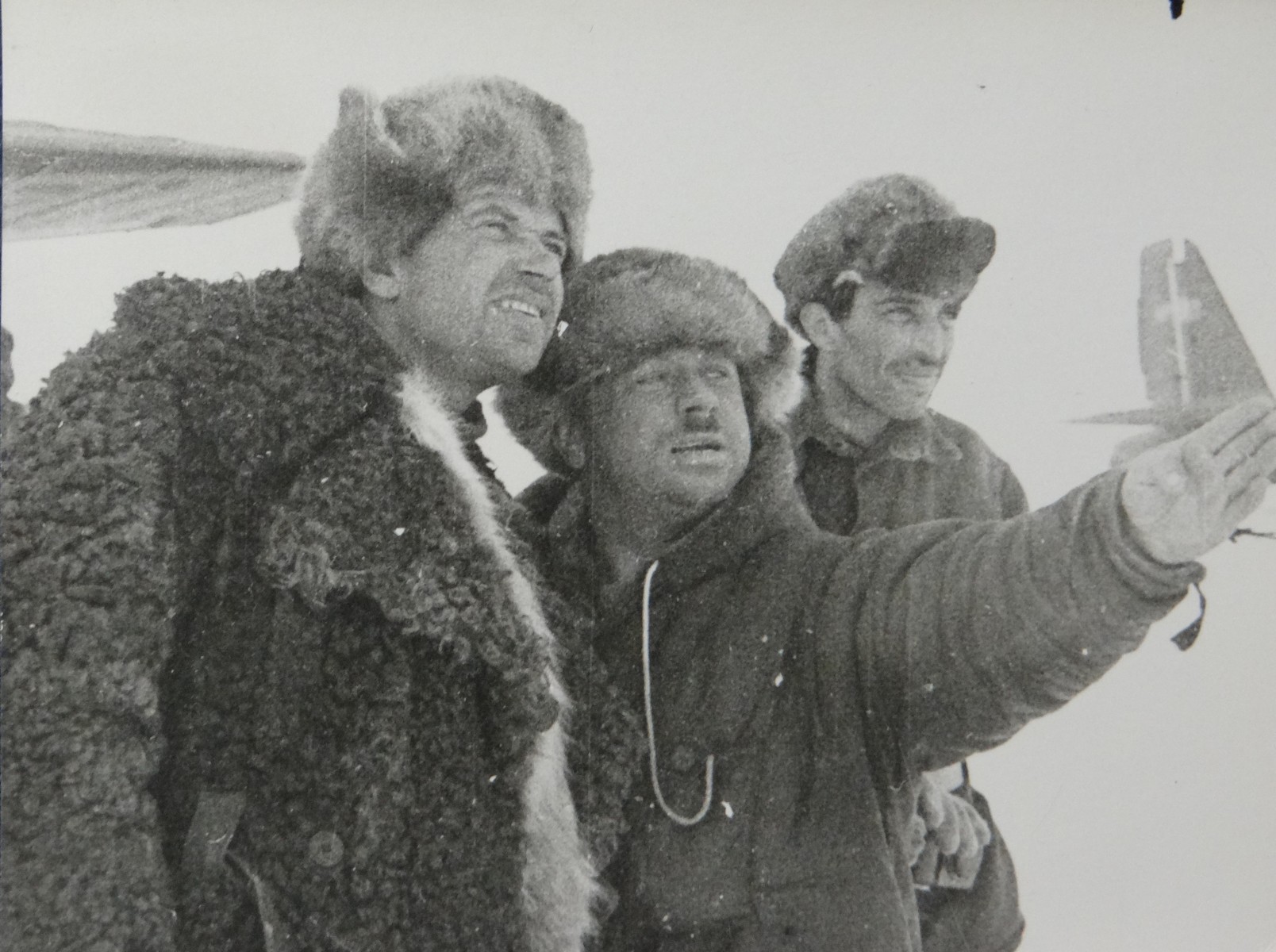
In the center - Papanin.
Four "papanintsa" remained alone on the ice for the long 9 months.
The research program was very intense - all four members of the expedition worked 16-18 hours each. Temperature and humidity of the air, wind speed and direction, ice thickness, drift speed and direction, water temperature at different depths, magnetic field parameters, gravity measurements, hydrochemical and hydrobiological measurements, and so on were measured. Every day, Krenkel established contact with the Great Earth and transmitted a summary of what was done during the day, received radiograms. And all this is Morse code, if that. Specially for the radio station, the polar explorers built a snow house:
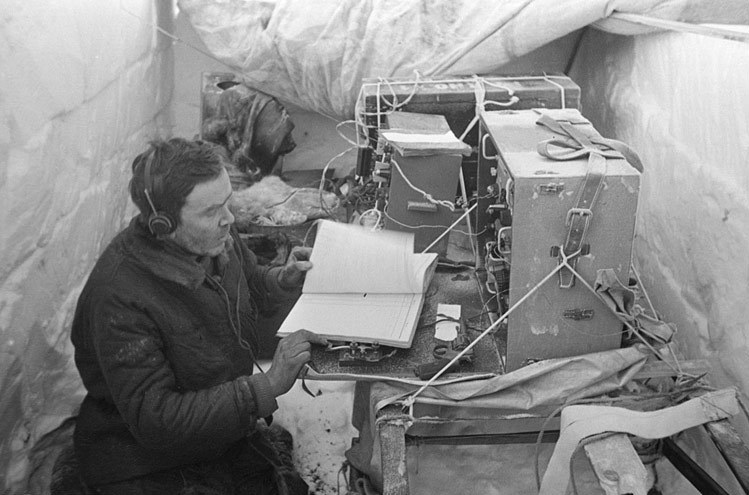
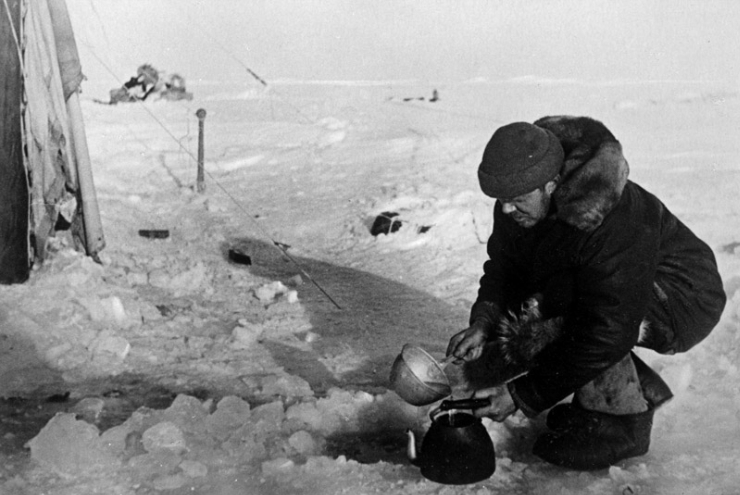
First, the most ordinary tent served as the “Papanins” kitchen, but then they laid out more comfortable — and warm — premises from the snow blocks. The supplies were distributed in three tents in the event that if the ice floe suddenly split, not all products would be lost at once.
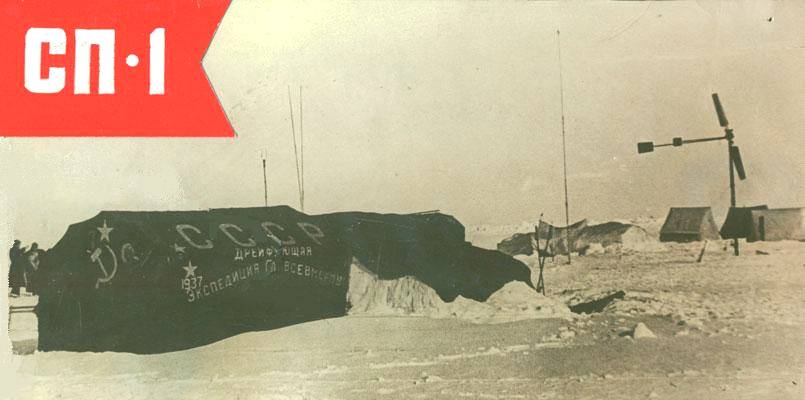
Weekdays of polar explorers were very difficult: a considerable part of the expedition in a residential tent had a negative temperature. According to the memoirs of Papanin, waking up in the morning, I had to prepare myself for a long time to unbutton my warm sleeping bag and jump out into the icy air. Then you start to dress quickly and quickly: two layers of warm underwear, warm pants, two pairs of woolen socks, a sweater, a fur coat, a hat, and high fur boots.
Every day it was necessary to measure the depth of the sea under the ice and take water samples. To do this, the wells were lowered to 4 km of cable with attached thermometers and bathometers. And then all this had to be lifted by hand winches to the surface. We also had to regularly measure the direction of flow at different depths. Work on the winches was hard and exhausting.
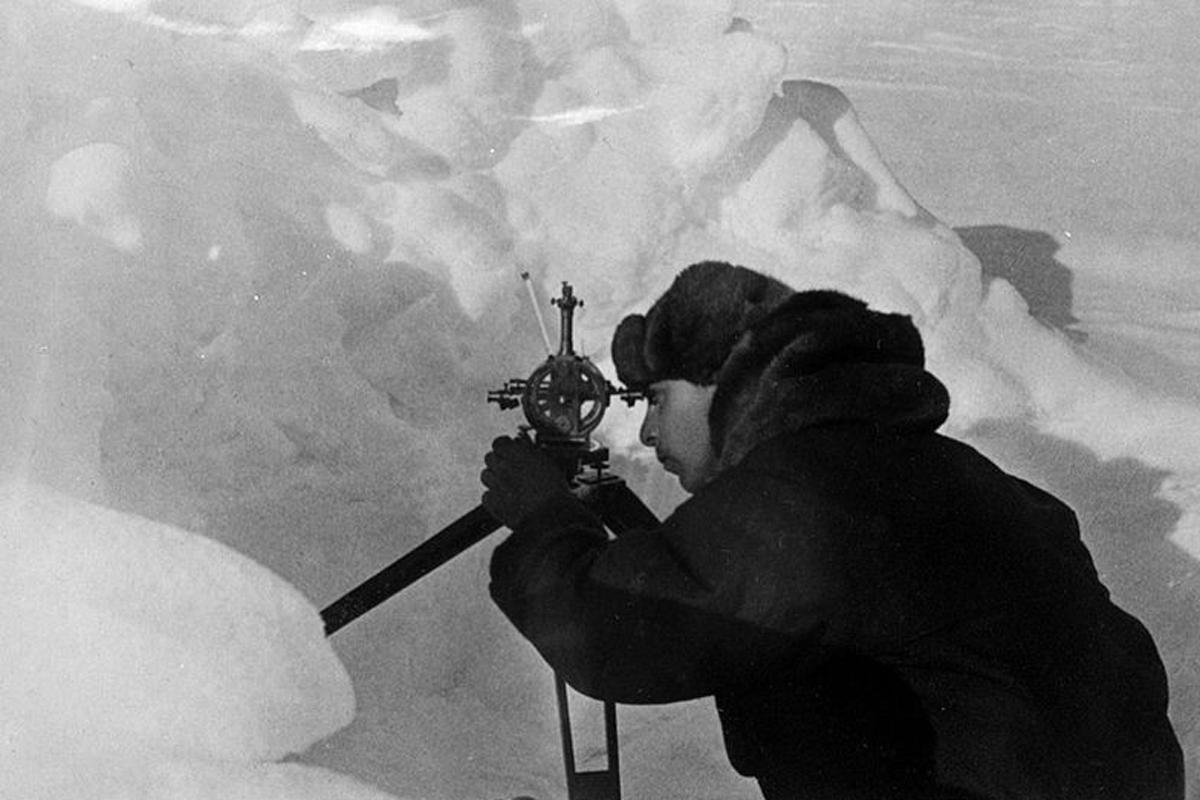
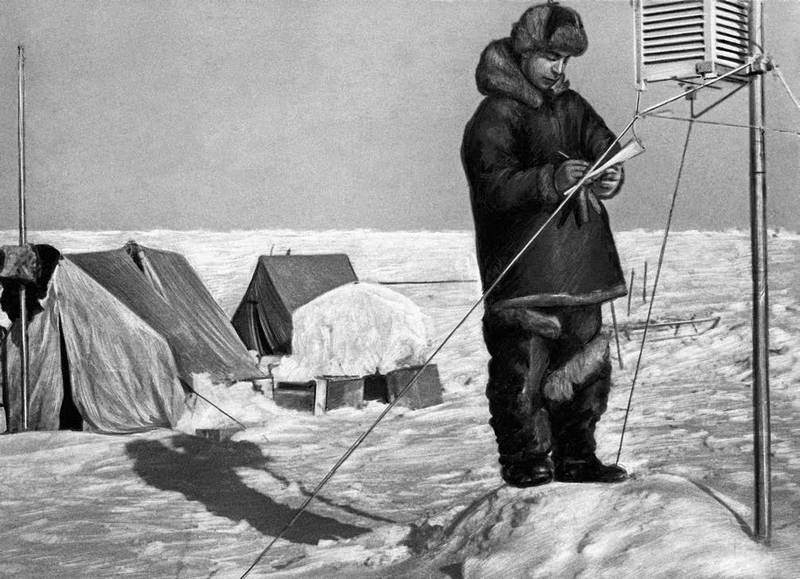

The ice field on which the station stood, under a layer of snow, everything was permeated by through cracks down to the sea water, so the polar explorers had to be more careful when digging out the snow. And during the thaws and rains other problems began: the walls of the snow houses collapsed, the tents melted, streams flowed everywhere, real lakes covered the ice floe. It got to the point that it was possible to move between points of conducting scientific measurements and observations only on an inflatable rubber boat.
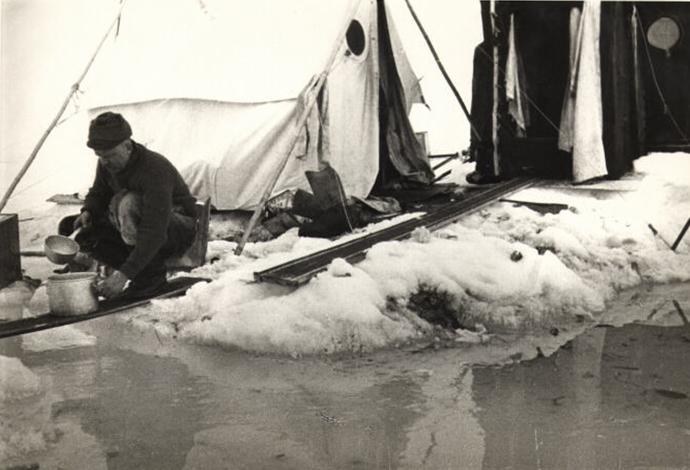
Because of the rains, fog and sleet, the clothes got wet, it became heavy and cold, it took a long and hard time to dry it. Today, high-tech synthetic fabrics and heaters, membranes and water-repellent impregnations are available to us. And then the choice was small: cotton and wool fabrics, fur and down - with all the ensuing disadvantages such as weight, thickness, hygroscopicity and drying time. Fuel supplies were limited, so it was impossible to burn too much primus stoves to dry clothes. In general, it is not for you to build a career in the office.
In these weekdays, eight months have passed.
Initially, the ice floe on which the station was set up was about 3 x 5 km. However, as it drifted to the south, it became less and less: the ice became thinner, pieces of ice broke off. On February 1, 1938, a storm broke out, as a result of which the station was on a piece of ice about 300 x 200 meters. Was lost part of the supplies. Polar explorers reported this by radio, and urgently began to prepare for evacuation on the Big Earth. To rescue the “Papanins”, they sent three ships that could most quickly be in the right area off the coast of Greenland: the steamer “Murmanets”, icebreakers “Taimyr” and “Murman”.
On February 19, 1938, the expedition was successfully evacuated from the ice floe by the approached icebreakers. By that moment, the North Pole — 1 had drifted about 2500 km. The data collected during the expedition were highly appreciated both in Soviet and world scientific circles.



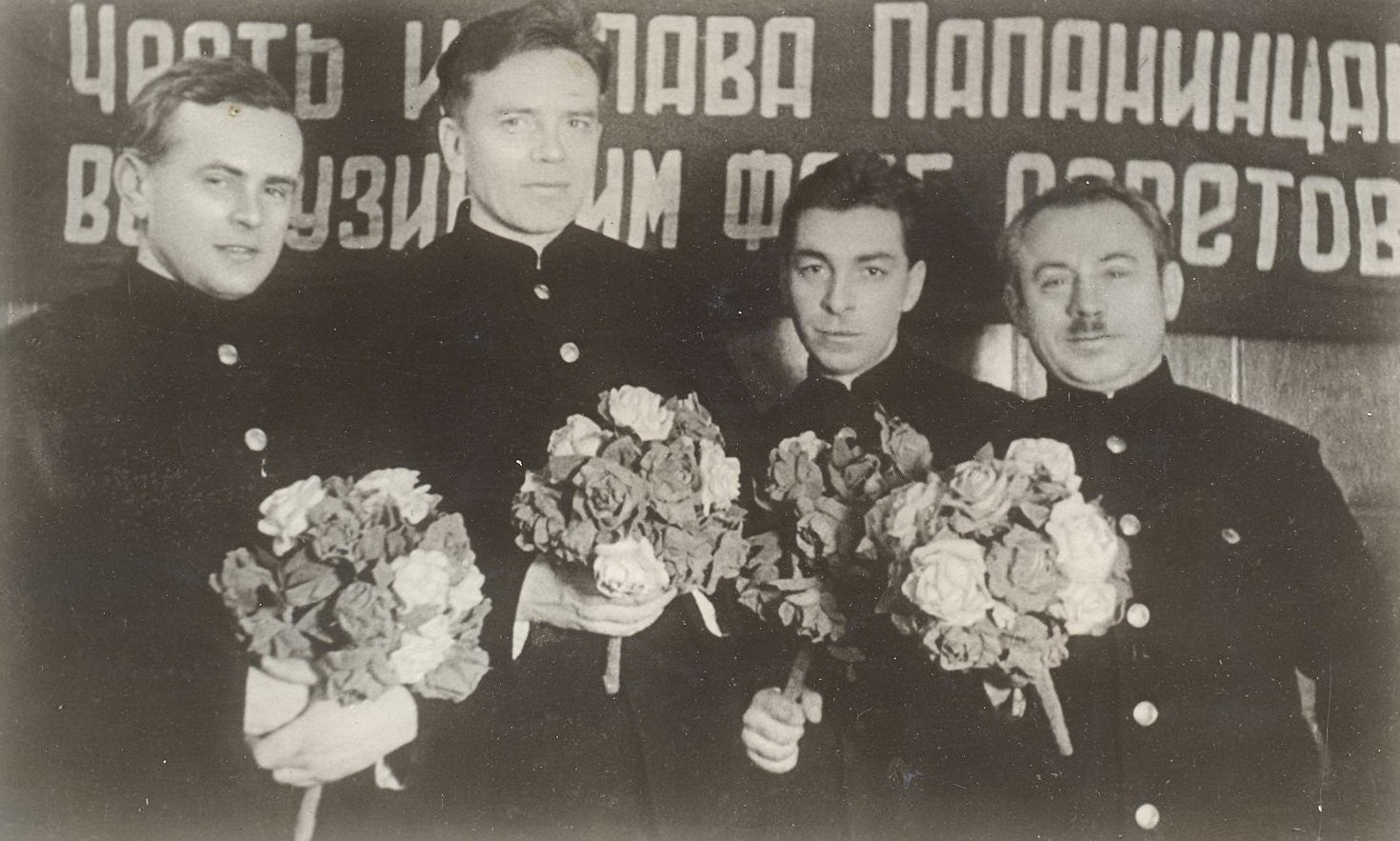
Documentary film about the expedition "At the North Pole":
And on this map there are several polar voyage routes, including the Papanin expedition.
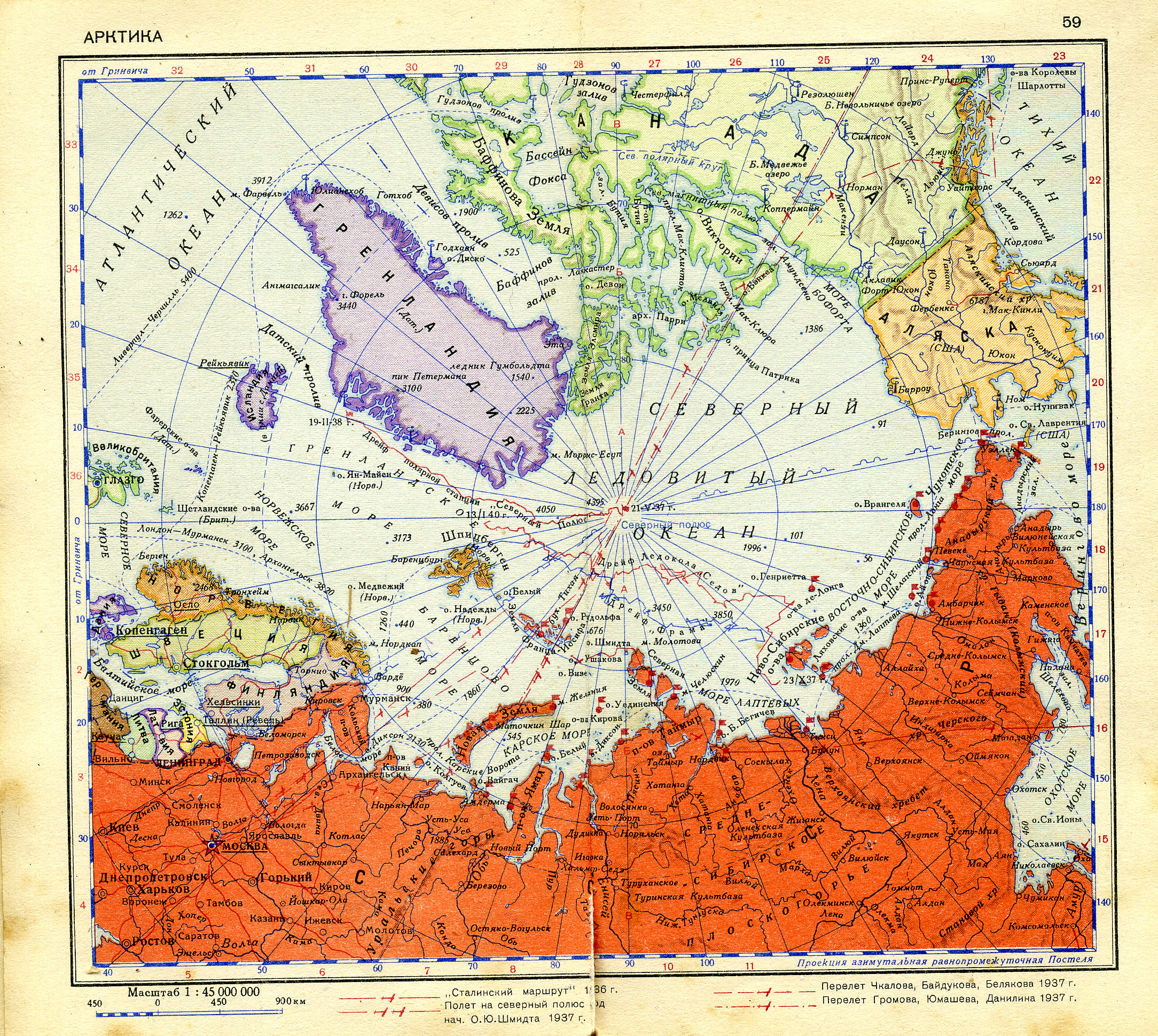
All Articles